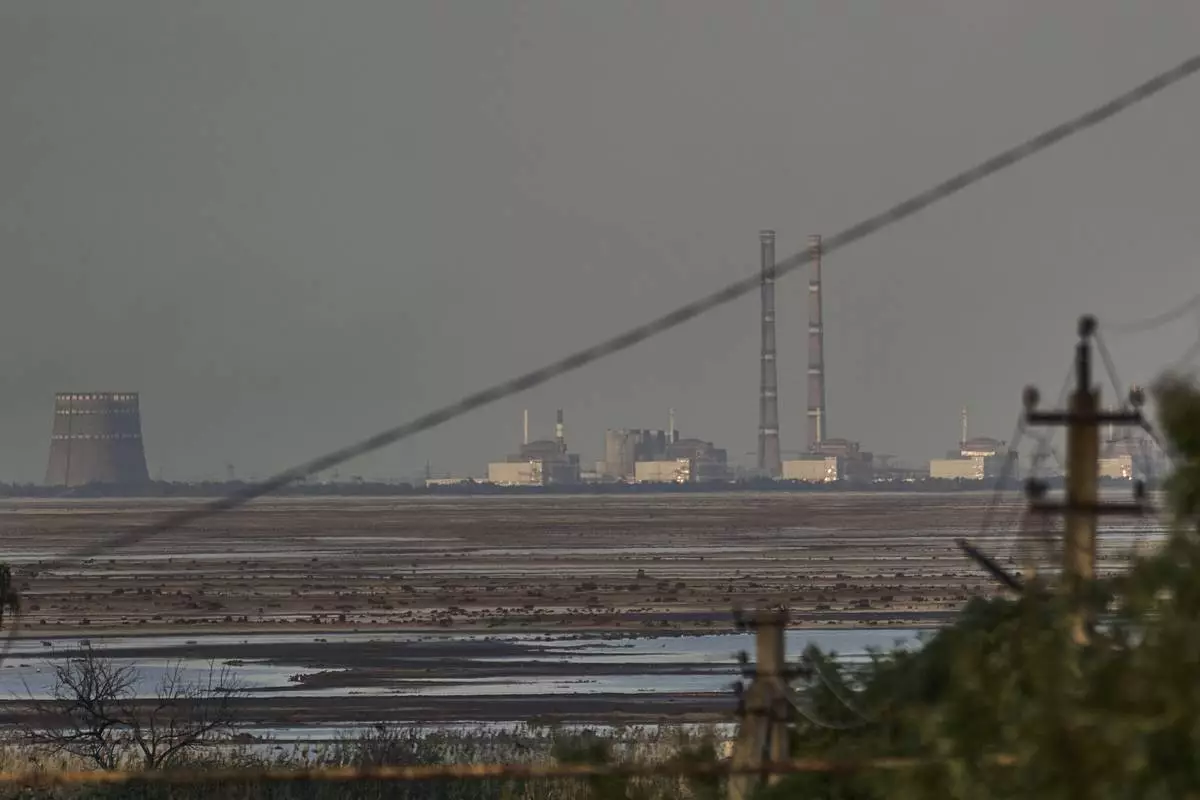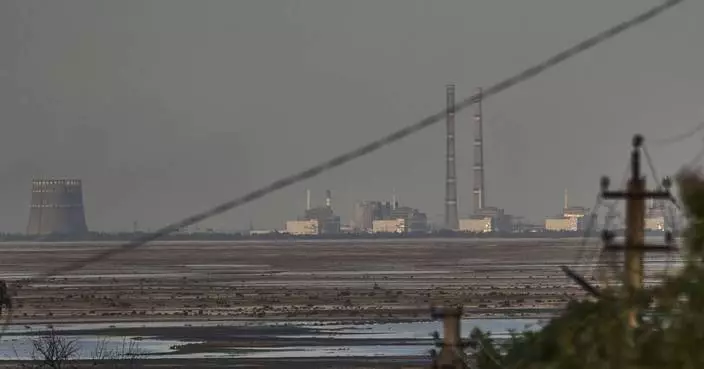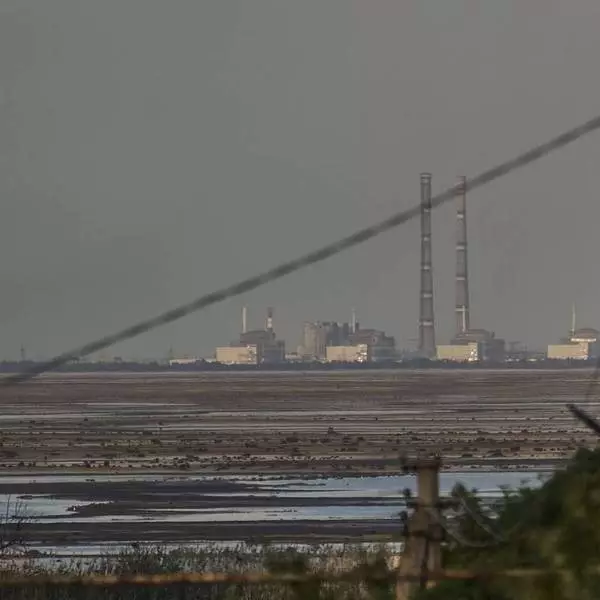NASA has nailed an engine test on a spacecraft 13 billion miles away.

This rendering provided by NASA shows Voyager 1. NASA has nailed a thruster test on Voyager 1, a spacecraft 13 billion miles away. Last week, ground controllers sent commands to fire backup thrusters on Voyager 1, humanity’s most distant spacecraft.(NASA Photo)
Last week, ground controllers sent commands to fire backup thrusters on Voyager 1, our most distant spacecraft. The thrusters had been idle for 37 years, since Voyager 1 flew past Saturn.
To NASA's delight, the four dormant thrusters came alive. It took more than 19 hours — the one-way travel time for signals — for controllers at the Jet Propulsion Laboratory in Pasadena, California, to get the good news.
Engineers wanted to see if these alternate thrusters could point Voyager 1's antenna toward Earth, a job normally handled by a different set that's now degrading. The thrusters will take over pointing operations next month. The switch could extend Voyager 1's life by two to three years.
Launched in 1977, Voyager 1 is the only spacecraft traveling through interstellar space, the region beyond our solar system. Voyager 2 is close on its heels — nearly 11 billion miles from Earth. The thruster test worked so well that NASA expects to try it on Voyager 2. That won't happen anytime soon, though, because Voyager 2's original thrusters are still working fine.
The Voyager flight team dug up old records and studied the original software before tackling the test. As each milestone in the test was achieved, the excitement level grew, said propulsion engineer Todd Barber.
"The mood was one of relief, joy and incredulity after witnessing these well-rested thrusters pick up the baton as if no time had passed at all," he said in a statement.
The twin Voyagers provided stunning close-up views of Jupiter and Saturn. Voyager 2 also offered shots of Uranus and Neptune.
UNITED NATIONS (AP) — Russia and Ukraine on Monday traded blame before the United Nations Security Council for the attacks on Europe’s largest nuclear power plant, which the head of the International Atomic Energy Agency said have put the world “dangerously close to a nuclear accident.”
Without attributing blame, IAEA Director General Rafael Mariano Grossi said his agency has been able to confirm three attacks against the Zaporizhzhia Nuclear Power Plant since April 7.
“These reckless attacks must cease immediately,” he told the Security Council. “Though, fortunately, they have not led to a radiological incident this time, they significantly increase the risk … where nuclear safety is already compromised.”
The remote-controlled nature of the drones that have attacked the plant means that it is impossible to definitively determine who launched them, Grossi told reporters after the meeting.
“In order to say something like that, we must have proof,” he said. “These attacks have been performed with a multitude of drones.”
Zaporizhzhia sits in Russian-controlled territory in southeastern Ukraine and has six nuclear reactors.
Fears of a nuclear catastrophe have been at the forefront since Russian troops occupied the plant shortly after invading in February 2022. Continued fighting between Russian and Ukrainian forces — as well as the tense supply situation at the plant — have raised the specter of a disaster.
Ukraine and its allies on Monday again blamed Russia for dangers at the site, with the United States saying, “Russia does not care about these risks.”
“If it did, it would not continue to forcibly control the plant,” U.S. deputy ambassador Robert Wood told the Security Council, which met at the initiative of the U.S. and Slovenia.
Russia, for its part, said Ukraine was to blame for the attacks.
“The IAEA’s report does not pinpoint which side is behind the attacks,” Russia’s U.N. Ambassador Vassily Nebenzia said. “We know full well who it is.”
“Over the last few months, such attacks not only resumed,” Nebenzia said, “they significantly intensified.”
Ukraine’s ambassador to the U.N., Sergiy Kyslytsya, called the attacks “a well-planned false flag operation by the Russian Federation,” which he alleged Russia had designed to distract the world from its invasion of its neighbor.
The Zaporizhzhia facility is one of the 10 biggest nuclear plants in the world. Fighting in the southern part of Ukraine where it is located has raised the specter of a potential nuclear disaster like the one at Chernobyl in 1986, where a reactor exploded and blew deadly radiation across a vast area.
Neither Russia nor Ukraine in recent months has been able to make significant advances along the 1,000-kilometer (620-mile) front line crossing eastern and southern Ukraine. Drones, artillery and missiles have featured heavily in what has become a war of attrition.
Russia and Ukraine have frequently traded accusations over the Zaporizhzhia plant.
The most recent strikes did not compromise the facility, which is designed to withstand a commercial airliner crashing into it, the IAEA said.
The plant’s six reactors have been shut down for months, but it still needs power and qualified staff to operate crucial cooling systems and other safety features.

FILE - The Zaporizhzhia nuclear power plant, Europe's largest, is seen in the background of the shallow Kakhovka Reservoir after the dam collapse, in Energodar, Russian-occupied Ukraine, Tuesday, June 27, 2023. Officials at the Russian-controlled Zaporizhzhia Nuclear Power Plant said that the site was attacked Sunday April 7, 2024, by Ukrainian military drones, including a strike on the dome of the plant’s sixth power unit. (AP Photo/Libkos, File)

IAEA warns that attacks on a nuclear plant in Russian-controlled Ukraine put the world at risk

IAEA warns that attacks on a nuclear plant in Russian-controlled Ukraine put the world at risk







